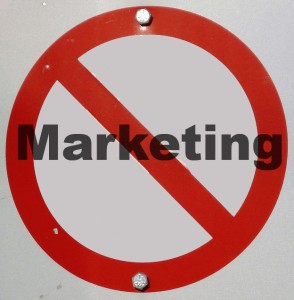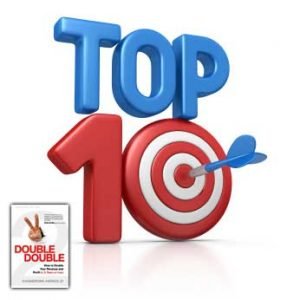A powerful brand image is essential to any company. People won’t think to use your product or service if they don’t know your brand. Wearing your brand’s logo can do a lot for your company for a variety of reasons. Here’s why you want to do it!
The Power of Standing Out
Since everyone has to wear clothes, why not put them to work marketing your product or service? It’s an easy win for your company, and in some instances such as networking events and conferences corporate clothing will help you stand out in a sea of suits.
“The ‘rule of 7’ in marketing suggests that consumers must encounter 7 touchpoints with your brand before being persuaded to buy. Branded clothing is a great way to consistently put your message in front of your target audience.” – AB Print Group LTD
At conferences of up to 2000 people, there would be four of us in 1-800-GOT-JUNK? fleeces with huge logos on our backs. People thought there were at least twenty of us walking around because they saw our logos so often in the middle of all those suits.
The Power of Recognition
Every time I wear branded clothing, someone comments and asks me about my company. Even as far back as College Pro Painters, our painters wore shirts emblazoned with our logo so that while they were up on ladders people would see our brand.
“84% of consumers claim that promotional material boosts their own awareness about a certain brand.” – Norms Conference
Branded clothing also proves helpful when recruiting for new employees. One summer, I had my painters wear their painting shirts with huge logos on them to the university pub. I bribed them with free beer to do it. Needless to say, it helped me find new painters every time.
The Power of Perfect Placement
While building 1-800-GOT-JUNK?, I would place my branded jacket on the outside of chairs so that it would be seen while I was sitting down. On planes, I’d fold it in such a way that the logo stood out even when placed in overhead bins. I was relentlessly getting my name out to prospects.
“If you have well-designed branded apparel with an interesting logo or witty slogan, people will approach you about your company instead of you pitching to them. The more people see your name, the wider your impact and the more conversations about your company you can start.” – Kaye Smith
Not only is it useful to place your branded merchandise in visible places, but it also matters where that logo is placed on the merchandise itself. Massive logos on the back of a shirt work well for the employees of that company to wear at work, but if you’re doing the same for customer merchandise, it’s a lot less likely they’re going to wear clothing with such an imposing logo. Think about who the clothing is for and when you’d ideally want those people to wear it before designing the merchandise.
The Power of Variety
I put 1-800-GOT-JUNK?’s logo on everything. I even made license plates with the company’s name on it (as well as for another company I built).
“The most popular promotional products in terms of favorites listed by those who were surveyed were USB drives, pens, an electrical item, or a mug. […] When it comes to how long a promotional product is kept, mugs were reported to be kept longer than any other promotional item.” – Brandwatch
Having a variety of branded clothing and merchandise increasing the chance of more people sharing your brand with the world. Women are less likely to wear the men’s polo shirt you’ve made, while some people might prefer their regular clothes and would rather go for a mug instead. Having options means there is something for everyone. If people actually like the branded clothing they have, they’re far more likely to wear it.
Branded merchandise can be a powerful advertising tool for your company if you know what you’re doing. Make sure your logo is strong and your brand is clear!
If you have questions or would like more information, I’d be happy to help. Please send an email, and my team will get in touch with you!
Editor’s Note: This post was originally published in April 2010 and has been edited for accuracy and comprehensiveness.


 Every day, editors go to their offices and sit with a stack of press releases in front of them. Those press releases came in over the news wire, and guess what the editor does for the first two hours every day? Rejects almost all of those press releases.
Given a choice, would you call the editor who says no all day or the writer who is just waiting for inspiration? You call the writer, of course!
Every day, editors go to their offices and sit with a stack of press releases in front of them. Those press releases came in over the news wire, and guess what the editor does for the first two hours every day? Rejects almost all of those press releases.
Given a choice, would you call the editor who says no all day or the writer who is just waiting for inspiration? You call the writer, of course!

 What to Say to the Media
What to Say to the Media



